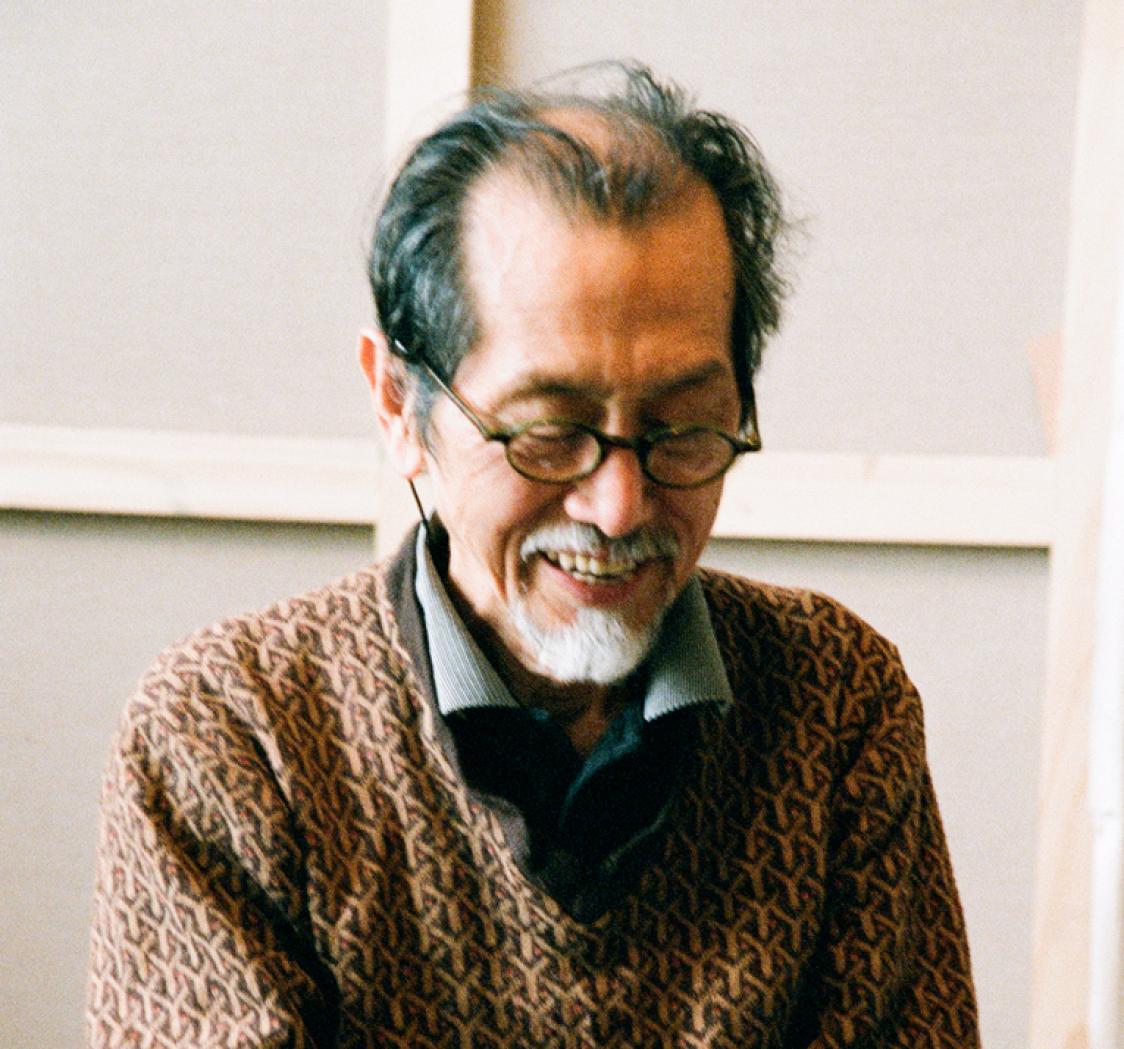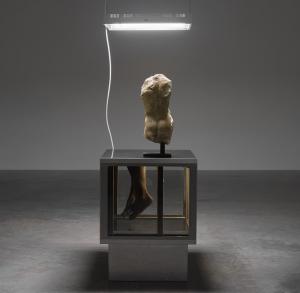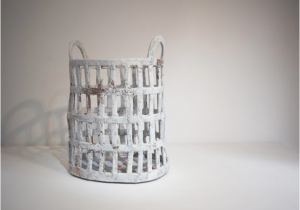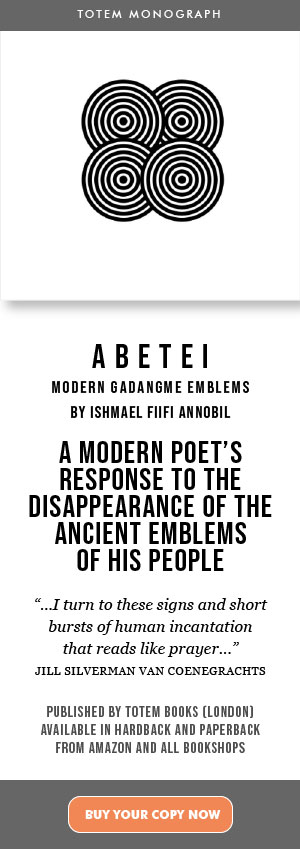KENJI YOSHIDA : ARTIST OF THE SOUL - AN INTRODUCTION
"Searching the new in art is always like praying."
- Kenji Yoshida
22 June 2007, October Gallery, London: The opening of Kenji Yoshida’s Inochi To Heiwa (Life and Peace) exhibition. I dragged along a recent acolyte, Abiy Mmo, a photographer from Ethiopia. We were ready with camcorders, in case we got a film out of it. I had watched Yoshida over the years, from the gallery’s Transvangarde cycle of exhibitions onwards, and always felt inclined to chronicle him for the world. What better chance than a solo exhibition?
There was something resplendent about Yoshida that day, and his works were blazing with charisma and enchantment, as usual, but on a grander scale. The audience bristled with frisson, some crying before his works. We were in a sanctum of sorts, and we all knew it. Anyway, we filmed the proceedings by sufferance, not knowing what would happen next. I had written some critique about the October’s shows before, and had once taken an office space there, so I wasn't doing anything that unexpected.
So then I plucked the courage to ask Elisabeth Lalouschek (artistic director) if I could get a video interview with Yoshida. Her eyes lit up, and she dragged forth Jose Ferez Kuri (Yoshida’s friend and agent), fervently. It turned out Jose was the ready type. He duly whispered our intentions to Yoshida, who flashed a smile at us, in turn, and that was it—we sailed away on air. Somewhere along the way, I remember saying, “God has given us this film.”
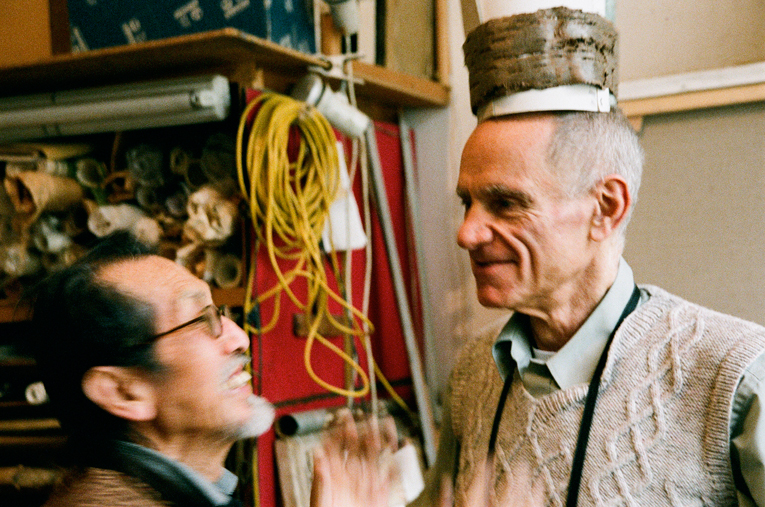
24th June 2007, October Gallery: Yoshida sauntered into our ring of cameras, microphones, and our great anticipation. He stooped courteously to point his translator, Michi Hirota, to her chair. We exchanged greetings then fell silent, to allow Yoshida to get ready. He shuffled through his many sheets of paper methodically (he had requested to see my questions the day before), placed them neatly on a footstool, and looked up at me with a warm smile. Jose Ferez retreated quietly to a chair outside the ring, poised to take photos. Then the world stood still. Somewhere along this surreal journey, I swear, I saw the five of us tucked away in a corner of the universe, spot-lit against the overwhelming darkness by a single ray of sunshine, as if we were the only beings left.
Interviewing Yoshida was like tapping an oracle; except, his truths were not woolly at all. He espoused mystery as practical truism: the human soul vis-a-vis God, and prayer as the incandescent conduit between the two forces. Though I do not understand Japanese, he got through to me somehow and, suddenly, I could see the true Yoshida – we were in the presence of one of the last artist-sages. For that mater, I decided to abandon the three-way conversation and let Michi ask the questions directly in Japanese, without translating. After the interview, Yoshida sprang up to shake my hand warmly, saying he knew I, too, was of the ‘spirit’. He then left the gallery, but something told me to keep the camera rolling. Sure enough he came back to dance for his paintings. Sublime.
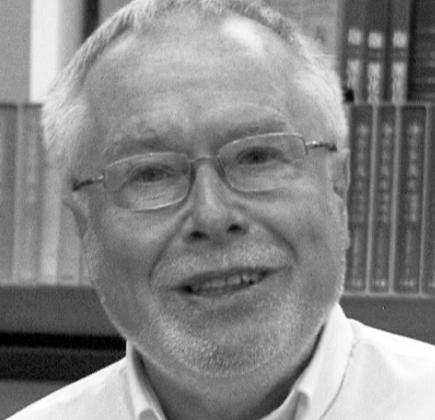 The following days and months would give me great insight in Jose Ferez’s intellectual and diplomatic powers. He facilitated a crucial interview at the British Museum with retired Emeritus Professor Lawrence Smith, the man that had given Yoshida the unprecedented solo exhibition at the British Museum, in 1993. That incredible interview provided the authoritative voice of the documentary, and it makes up for the failings of the camcorder I used for shooting it.. There followed a sobering interview and extempore flute ‘ode’ by the great Japanese percussionist and composer, Joji Hirota, also arranged by Jose Ferez. Joji Hirota would later score the whole film with his resplendent music.
The following days and months would give me great insight in Jose Ferez’s intellectual and diplomatic powers. He facilitated a crucial interview at the British Museum with retired Emeritus Professor Lawrence Smith, the man that had given Yoshida the unprecedented solo exhibition at the British Museum, in 1993. That incredible interview provided the authoritative voice of the documentary, and it makes up for the failings of the camcorder I used for shooting it.. There followed a sobering interview and extempore flute ‘ode’ by the great Japanese percussionist and composer, Joji Hirota, also arranged by Jose Ferez. Joji Hirota would later score the whole film with his resplendent music.
Beyond that, I turned to Japan to develop the cultural and historical milieu foe my narrative. Yuko Mukahira of The Documentary Workshop, Osaka, researched and gave me superb archive footage, guiding me with her greater directorial experience. Not to be outdone, the Hiroshima Memorial Museum rewarded my quest with such lucid imagery as to shame war itself: drawings by the survivors of the Hiroshima and Nagasaki Bombings. The two batches of archive material brought home the delirium of Yoshida’s youth; the bizarre fugue he had nearly played a part in, as a trained Kamikaze pilot. My communication with Japan offered a rare frisson of enchantment, maybe because of the sense of ease and patience of my benefactors over there.
As my Japan frisson was going on, Tate Post, the world-renowned London sound-post house agreed to collaborate on the film, though Vanesa Tate (the founder) was nursing a broken knee from an accident in Los Angeles! That was a blessing because we had shot the entire film with rudimentary equipment, especially in sound terms. We needed a troubleshooter and fixer desperately, if we were to have anything worthy of its name. There were other angels along the way, chiefly, editor/director Dave Butler, Abiy Mamo (who helped pay for the project), intern Anita Keymatlian, motion graphics artist Tristan Nieto, producer Vanessa Cornier, cinematographer Elodie Maître, editor Francesco Caradonna, sound engineer and designer Tony Sheng, sound designer Ricardo Pujol, Editor Damien Kwasnik, translator Itsuka Yamasaki, and young editor Hannah Newman-Smart.
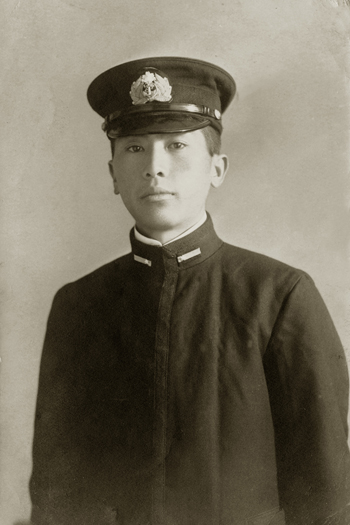 But what of the artist? What of the relatively unknown aesthete and paragon of love and peace? Kenji Yoshida was born into an agrarian family, in Ikeda City, 24 May, 1924. He graduated as a teacher at the age of nineteen, and started studying art under Furukido Masaru Sensei, who told Yoshida: 'Don't go to war, Live.' However, Yoshida joined the Japanese Marine Air Force and trained as a kamikaze pilot, though the war ended before he could catapult himself into an American carrier.
But what of the artist? What of the relatively unknown aesthete and paragon of love and peace? Kenji Yoshida was born into an agrarian family, in Ikeda City, 24 May, 1924. He graduated as a teacher at the age of nineteen, and started studying art under Furukido Masaru Sensei, who told Yoshida: 'Don't go to war, Live.' However, Yoshida joined the Japanese Marine Air Force and trained as a kamikaze pilot, though the war ended before he could catapult himself into an American carrier.
Sadly, his professor Furukido would die during World War II, in a road accident, in the Philippines. Bereft, Yoshida resumed art studies under Furukido’s contemporary, Hayashi Kiyoshi Sensei; a relationship that continued until Hayashi's death in 1988. But Mr. Furukido had not gone totally. In later years, Yoshida would confess to feeling imbued by his master’s spirit, alongside those of his wife and closest friends, such as the great Spanish sculptor, Ape.les Fenosa. Except, the Furukido ‘possession’ came with quite a consuming purpose: Peace at all costs.
After the war, Yoshida returned to teaching, in Osaka, while taking classes from Kiyoshi. After six years, he relocated to Tokyo to continue teaching. It may have been either a conscious or fateful decision, for Tokyo gave him his yearning for internationalism. According to Professor Lawrence Smith, Yoshida fell in with a group of artists who wanted to embrace modern Western trends in art.
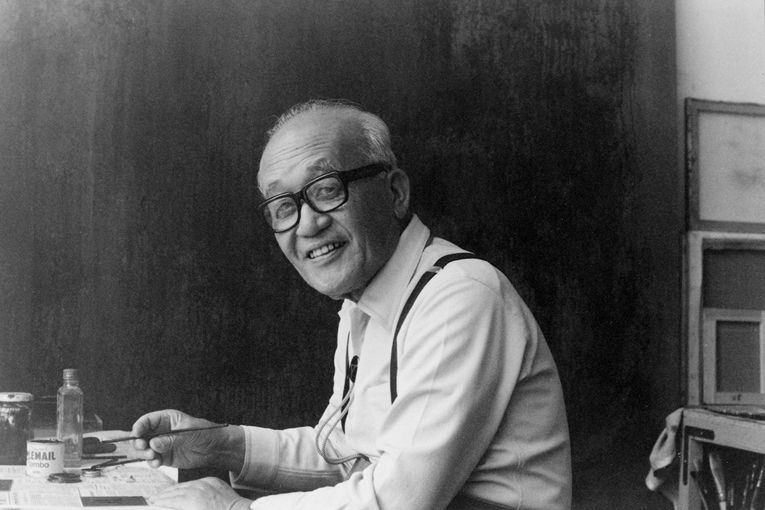 The abiding purpose of those artists was the search for unfettered artistic evolution—Japan had forbidden such external associations long before the war. Nevertheless, when Yoshida boarded the Air France airplane with his wife Hiroko in 1964, to Paris, he was already a master of Japanese art processes, and thus a veritable contender and exchanger of ideas. He joined the venerable Stanley Hayter’s world famous Atelier 17. Based at Montparnasse, the epicentre of the Parisian art community, Atelier would provide him with the best contemporaries imaginable, including Pablo Picasso, Alberto Giacometti, Joan Miró, Alexander Calder, Marc Chagall, Jackson Pollock, and Mark Rothko.
The abiding purpose of those artists was the search for unfettered artistic evolution—Japan had forbidden such external associations long before the war. Nevertheless, when Yoshida boarded the Air France airplane with his wife Hiroko in 1964, to Paris, he was already a master of Japanese art processes, and thus a veritable contender and exchanger of ideas. He joined the venerable Stanley Hayter’s world famous Atelier 17. Based at Montparnasse, the epicentre of the Parisian art community, Atelier would provide him with the best contemporaries imaginable, including Pablo Picasso, Alberto Giacometti, Joan Miró, Alexander Calder, Marc Chagall, Jackson Pollock, and Mark Rothko.
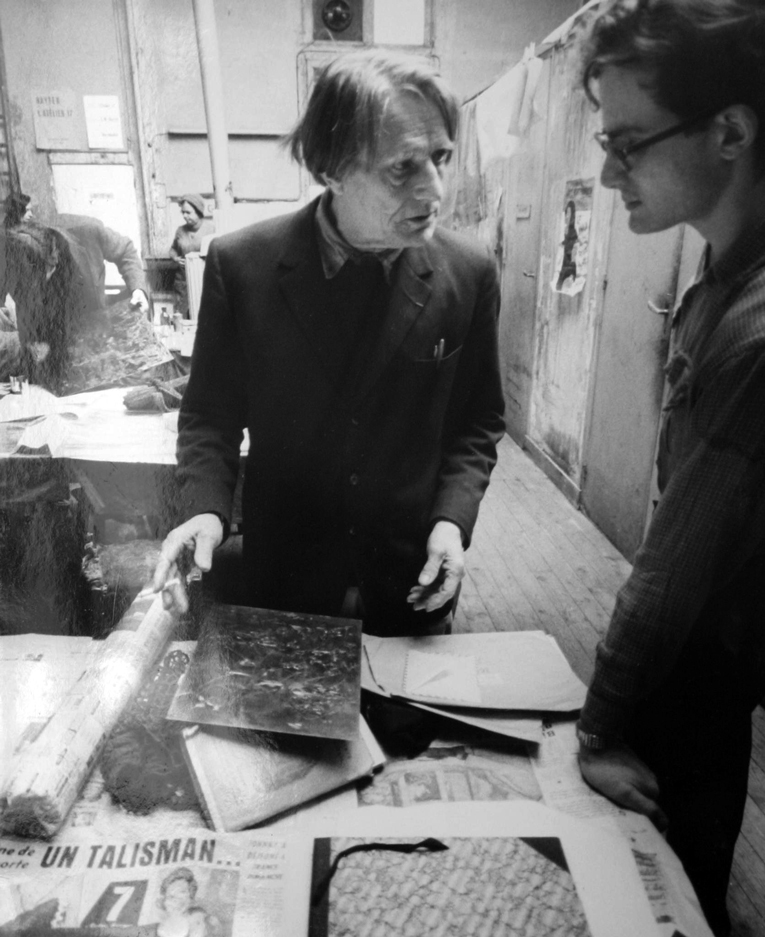 Two years later he participated in the founding of Norway’s Atelier du Nord, a prestigious commission that would provide him much-needed subvention to continue his art. Through all that, Yoshida was moulting. He experimented in print, exposed as he was to Stanley Hayter’s surreal and Abstract Expressionistic ideas. His work also started to develop extra dimensionality, either by way of illusory juxtaposition or neo-impasto technique. The calligraphic tenets he had been brought up with were shifting steadily into an eloquent, yet rarefied, international language. He was honing a more fluid tendency toward achieving high-tensility within a wider palette, as opposed to the monochromatic, concrete means to the same end. Yet still the spiritual accuracy of black and white persisted in his major works, because as he told me in the film, “Black absorbs all, and white emits all”.
Two years later he participated in the founding of Norway’s Atelier du Nord, a prestigious commission that would provide him much-needed subvention to continue his art. Through all that, Yoshida was moulting. He experimented in print, exposed as he was to Stanley Hayter’s surreal and Abstract Expressionistic ideas. His work also started to develop extra dimensionality, either by way of illusory juxtaposition or neo-impasto technique. The calligraphic tenets he had been brought up with were shifting steadily into an eloquent, yet rarefied, international language. He was honing a more fluid tendency toward achieving high-tensility within a wider palette, as opposed to the monochromatic, concrete means to the same end. Yet still the spiritual accuracy of black and white persisted in his major works, because as he told me in the film, “Black absorbs all, and white emits all”.
France did not just give him his “soul-home”, it also offered him a clear window onto the greater world. Cosmopolitanism. The diversity of and the religiosity of human beings naturally emerged from this vista to seduce him. Underpinned by his Shintoism, he contemplated the idea of prayer within his new syncretic view. It became his next cause. According to Jose Ferez Kuri, Yoshida became preoccupied by “What happens at the moment of prayer”. He went go into places of prayer to observe people in communion with the deity, working out how such supplication reflected or contrasted with his own seminal Shinto, till he arrived at a sense of commonality. Thus released, Furukido’s exhortation not to fight but live came back to him with some resonance. Henceforth all his work would be titled Inochi to Heiwa (life and peace), or La Vie (living or the art of living).
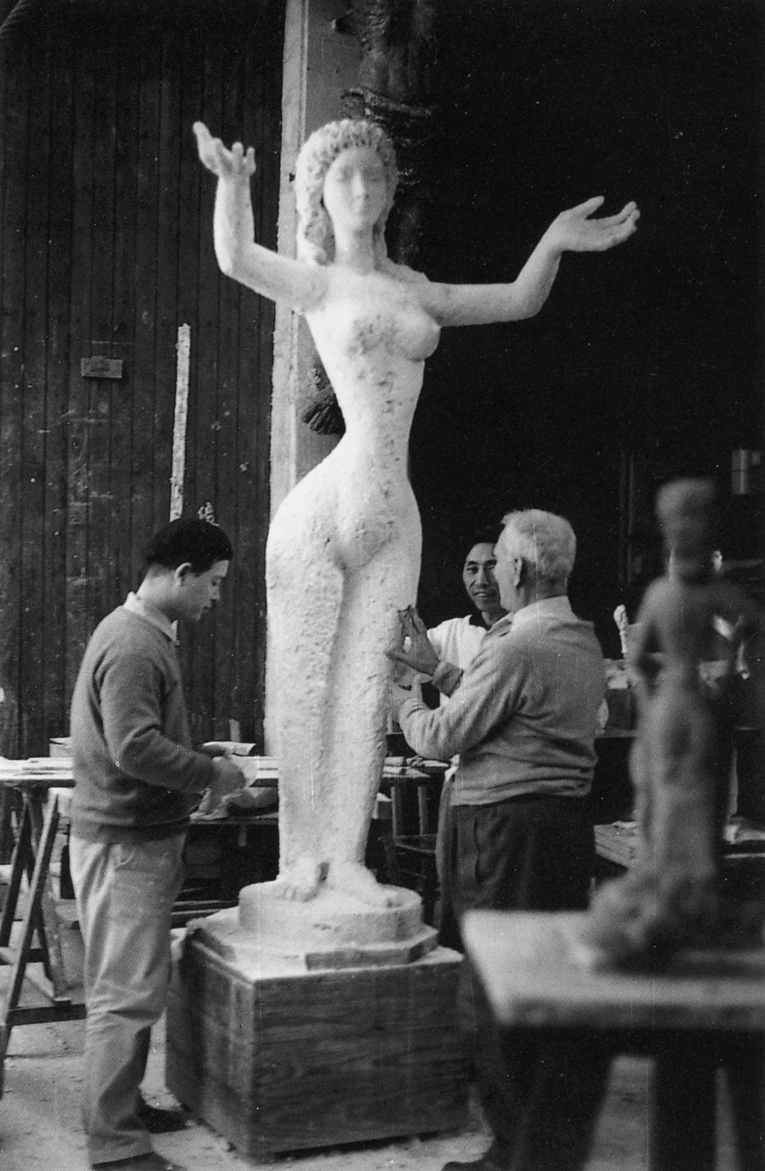 In 1968, Yoshida went to Israel and lived at the Shamir Kibbutz for two months. He extended his journey to Jordan, Syria and Lebanon. Then in 1972 he met the great Spanish sculpture Fernosa, and thus started one of his longest friendships, which lasted till Fernosa’s death in 1987. From 1972 onwards Yoshida travelled extensively in Europe and the Middle East, till 1983 when he felt the pull of Japan. He set off to his motherland to search for the traditional and ancient Japanese spirit.
In 1968, Yoshida went to Israel and lived at the Shamir Kibbutz for two months. He extended his journey to Jordan, Syria and Lebanon. Then in 1972 he met the great Spanish sculpture Fernosa, and thus started one of his longest friendships, which lasted till Fernosa’s death in 1987. From 1972 onwards Yoshida travelled extensively in Europe and the Middle East, till 1983 when he felt the pull of Japan. He set off to his motherland to search for the traditional and ancient Japanese spirit.
Simple enough quest, one may presume, but it was more arcane than that because Yoshida was of the old order. After all, Yoshida was at heart a traditional being working within a modern, international milieu, armed only with an ancient Japanese language and a smattering of French for communication. He had outstripped himself; he was ahead of all his Japanese contemporaries in art, but he was still with with them in spirit and nativity. One could only speculate, but it is possible that this may have also caused a contrasting nostalgia in his soul. It is also possible that he merely wanted to ‘signpost’ his journey from Japan to his new station. He spent three months on this quest and came away sated and ready to continue his artistic forays.
Three years after his spiritual re-alignment with motherland, his life-long friend and wife, Hiroko, passed away. According to Jose Ferez, he lost his only link to the world and living itself. She had been his mouthpiece, authentic cook, and an intellectual partner. She had written a commanding critique on Matisse. Yoshida dutifully acquired a plot in the illustrious Montparnasse and sculpted a double marble grave for his wife and, proactively, for himself. The following year he visited Cairo, Alexandria, and settled on the Valley of the Kings (Luxor) for deep spiritual absorption. After that Yoshida was different. He sojourned internally and ‘celestially’, and found the “colours of God”: Gold and silver. These, he concluded, reflected the luminosity he felt in God.
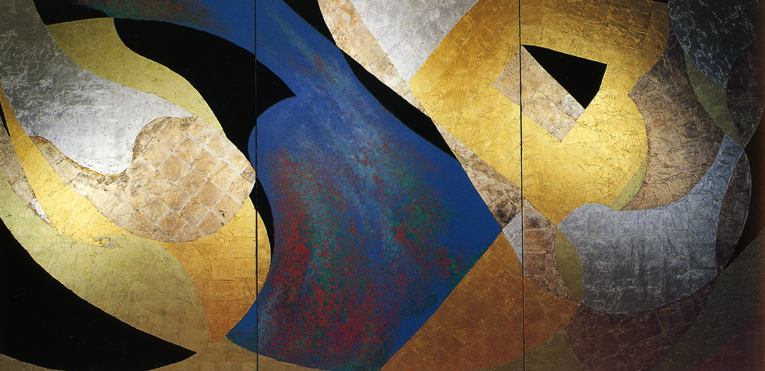
Suddenly, his monochromatic and even variegated prints from the past gave way to expansive ‘cosmoscapes’ in metal mediums (gold and silver leaf). I say cosmoscapes because his work had become facsimiles of the cosmos, totally imaginative, without any pictorial reference, for there was none to refer to. All the more haunting when people started to see the first photos from the Hubble Space Telescope project many years later. How was that possible? But I believe I have the answer: those magnificent works are facsimiles of the human soul at peace with itself. By referencing his own monastic soul, he pictured the cosmos. As above, so below! But this is mere speculation on my part. He may have been a real prophet or saint. After all, Professor Lawrence calls him the “last of mystical artists”. For that matter, I titled my film Kenji Yoshida – Artist of the Soul.
In 1989 Yoshida featured in the Transvangarde exhibition of the October Gallery, then went on to visit Biosphere 2, in the USA, where one of his multi-paneled works was on show. While there, he felt Mesoamerica calling. He asked Jose Ferez Kuri to take him to Mexico. Jose abided him in 1990, and something significant happened. He underwent the deepest metamorphoses of all time. He found himself among a native population he looked like, and could communicate with without knowing a word of Spanish. He also saw for himself the time-transcending modernism of ancient Inca. He saw exotic flora and fauna, and was invited into adobe compounds to share.
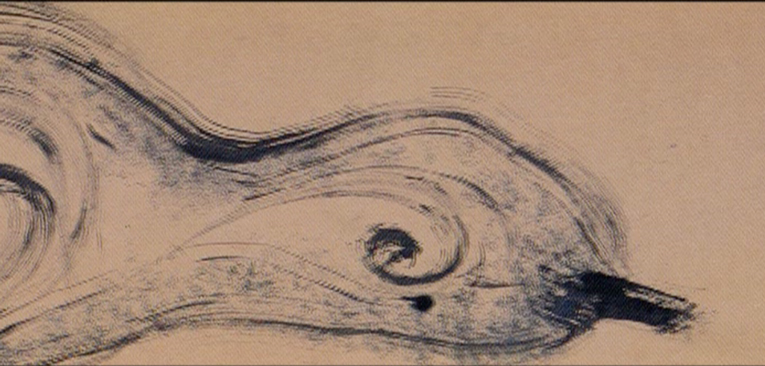
Inspired by such sweet maelstrom, Yoshida asked Jose for a roll of Kraft paper so he could draw. The format of this medium was telling; it offered a scroll on which to ‘narrate’ his visual diary, in the manner of the ancients. He drew freely and elementally with ink and brush, producing the most important calligraphic sketches of his life. Important because, though he had initially discarded the entire scroll as mere sketches, Jose had the prescience of mind to save it. Three years later, Professor Lawrence Smith saw this scroll and, out of Yoshida’s vast and impressive oeuvre, it was the one thing that convinced him to curate Yoshida’s unprecedented solo exhibition at The British Museum, 1993. Mexico also brought freshness to Yoshida’s palette. He started employing other colours, such as aqua marine, cobalt blues, among others, and his work also grew in scale. His last two exhibition, Inochi To Heiwa, 27 June 2007, at the October Gallery, and the magnificent testimonial Viex Et Paix at UNESCO, 13 October 2008, bore testimony to this unfolding splendor. I had the great fortune to screen my film about him to at that grand UNESCO event. I felt lucky to be at that exhibition both as a filmmaker and admirer, for it was obvious even to a newcomer like me that it was Yoshida’s ultimate statement.
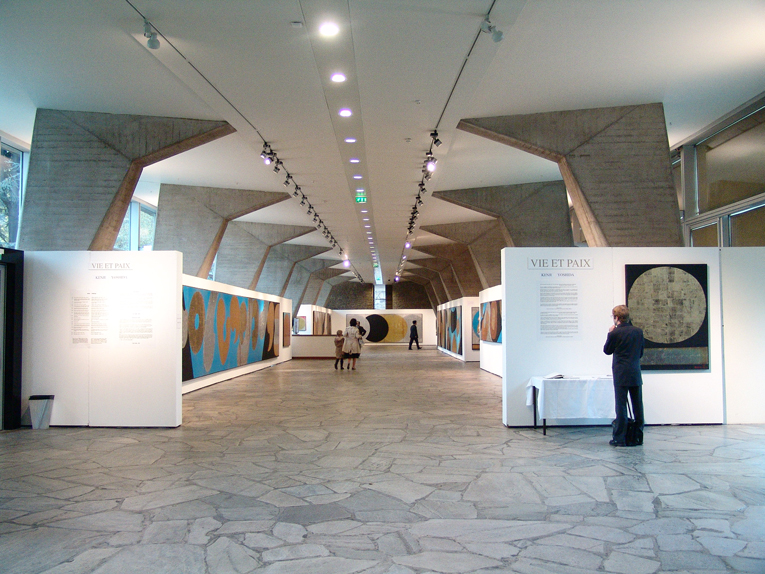
I therefore shook inside even as I filmed him afterwards; even as he jested with me, Abiy, and Jose at his studio; even as he watched the film I had made about him; and especially as we filmed and photographed him cleaning his future grave on our last day in Paris.
In February 2008, while adding the France photographs to the film, I received a call from Jose. It was to the point: “Yoshida has been taken to Japan by his daughter – He has advanced cancer of the liver.” My knees buckled. I withdrew into a strange place, and all I could see was the photo I took of Yoshida smiling at me with the Japanese flag in the distance. In hindsight, I realised that he had set up the shot. He had excused himself for a moment then, upon his return, retired to a chair a few yards from where had been dining. The flag of his motherland shone like a beacon over his shoulder, and I had to take that shot.
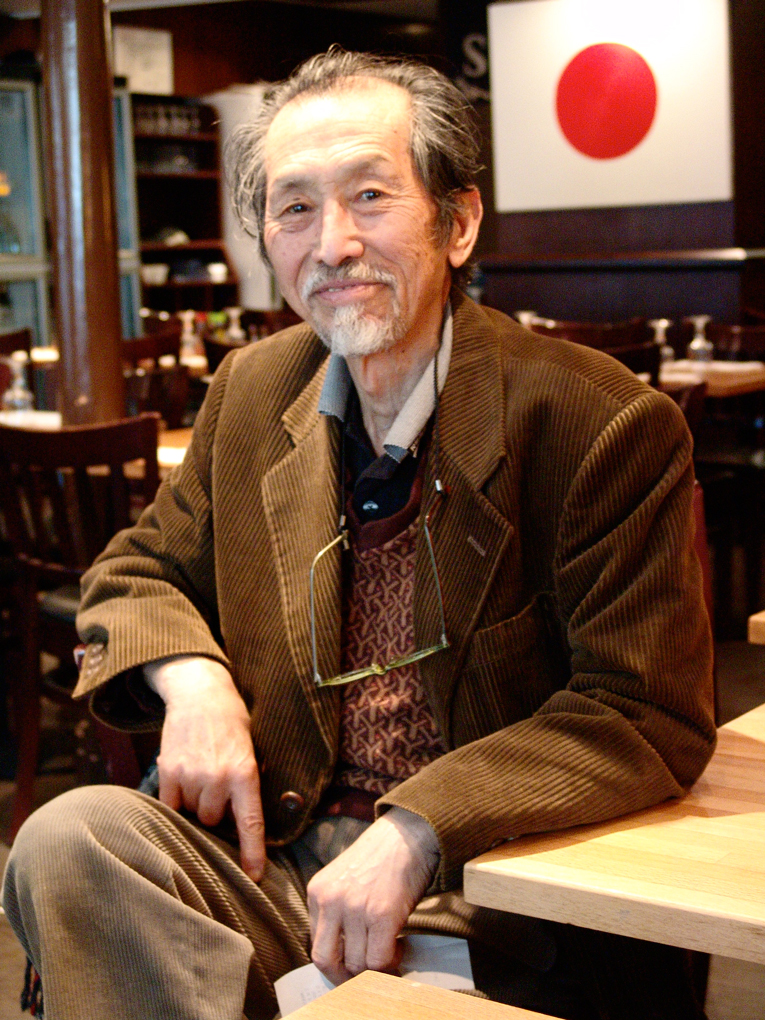 Anyhow, after a day of this mournful and warm reminiscing, I finally came to, and knew I had to prepare Yoshida’s film for a Japanese tour, because Jose wanted this to happen to “give the great man some comfort”. Then on 25th February I received the ominous email from Jose:
Anyhow, after a day of this mournful and warm reminiscing, I finally came to, and knew I had to prepare Yoshida’s film for a Japanese tour, because Jose wanted this to happen to “give the great man some comfort”. Then on 25th February I received the ominous email from Jose:
Ishmael,
It is with deep sorrow that I share with you the news of Yoshida passing yesterday.
He was a good part of my life and will continue to be.
I celebrate his life, his work, his joie de vivre.
Salud! Maestro Yoshida.
A bientot.
We continue,
Jose
Yoshida was returned to France for burial. As expected, the funeral was fabulous, repelete with Shinto ritual and chant. Orderly but deeply moving. Jose delivered a 'towering' eulogy, which he finishes with a symbolic scattering of gold flakes over his friend's tomb.
I did not have the means to travel and film the funeral, but, fortunately, our France producer, Vanessa Cornier, had recently moved back to Lyon from London, and she had the right temperament for directing such a delicate, formal shoot. She stepped up to the challenge, recruited seasoned Parisian cinematographer Elodie Maître, in turn, and nailed it beyond all expectation. A gifted journalist, Cornier had extended the coverage with very beautiful vox pops of Yoshida's friends, gallerists, admirers and collectors, picking them out of the post-funeral proceedings with tenderness. Her questions were on point, and the interviewees seemed palpably happy for the opportunity to render their own eulogies and reminiscences. I recall gaping at the lyrical footage it as it rolled across my monitor.
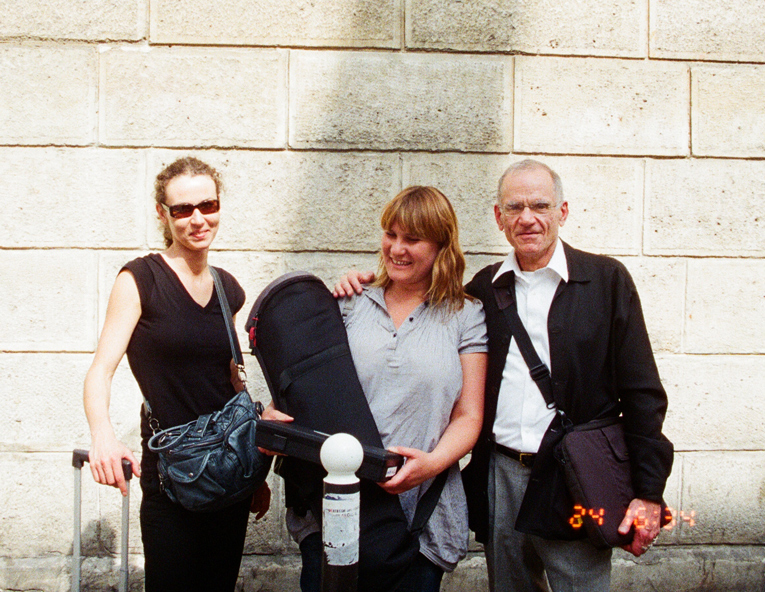
Alas, Jose Ferez, the great thinker and curator, would take his last bow, too, almost a year after Yoshida’s passing. He was documenting Yoshida’s work and collection at the master’s Montparnasse studio, while planning an extensive October Gallery retrospective as memorial to the maestro. Painful as his departure was, the timing monumentalized Jose’s friendship with, and faithfulness to, his friend. He had done his work consummately.
For my part, I have only benefitted. Through Yoshida, I came to understand my natural optimism better, and discovered that humans could triumph over fate. It is particularly sobering to have had the honour of making the definitive film about Maestro Kenji Yoshida. And though this unique film has been suffered for ten years at the hands of delinquent crewmembers and prospectors, it has retained its sanctity as a document of love. It has transcended materiality and time.
On 15 July, 2011, Kenji Yoshida – Artist of Soul, was offered by Yoshida’s daughter, Kiyoko, as part of a prayer for the victims of the 2011 Tōhoku earthquake and tsunami. The setting was the Historic and prestigious Shinto Shrine Tsurugaoka Hachimannguu (http://en.wikipedia.org/wiki/Tsurugaoka_Hachiman-g%C5%AB), and the theme was Prayer - Repose of the Soul and Regeneration. What else?
BY ISHMAEL ANNOBIL
More info: http://www.stonedog.info/projects/kenji-yoshida-artist-soul
Trailer: http://www.stonedog.info/trailers/kenji-yoshida-artist-soul
Images/Credits:
1) Kenji Yoshida in his Montparnasse studio, © Ishmael Annobil 2008
2) Kenji Yoshida and Jose Ferez Kuri, © Ishmael Annobil 2008
3) Professor Lawrence Smith, former Keeper of Japanese Drawings, The British Museum, © Ishmael Annobil 2008
4) Joji Hirota, Composer, Taiki Impressario, © Ishmael Annobil 2008
5)Kenji Yoshida in Japanese Marine Air Force uniform, © Kenji Yoshida Estate
6) Professor Furukido Masaru Sensei, © Kenji Yoshida Estate
7) Stanley Hayter with a Student, © Stanley Hayter Estate
8) Apel.les Fernosa with Yoshida and a fellow technician © Fernosa Foundation
9) La Vie, painting by Kenji Yoshida, © Kenji Yoshida Estate
10) Detail form Yoshida's Mexico scrolls, © Kenji Yoshida Estate
11) Kenji Yoshida with Japanese flag, © Ishmael Annobil 2008
12) Elodie Maître, Vanessa Cornier, and Jose Ferez Kuri @ The Jose Ferez Kuri Estate


